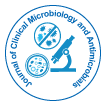

Opinion Article - (2023)Volume 7, Issue 4
Antibiotics, a class of powerful medications, have fundamentally revolutionized the landscape of modern medicine. These chemical compounds, primarily derived from microorganisms, have been instrumental in the treatment of bacterial infections since their discovery in the early 20th century. This article delves into the profound impact of antibiotic therapy in clinical treatment, exploring their historical significance, contemporary relevance, and the challenges posed by antibiotic resistance.
Historical milestones
The history of antibiotics is marked by significant milestones that have reshaped clinical treatment:
Discovery of penicillin: The accidental discovery of penicillin by sir alexander fleming ushered in the antibiotic era. Penicillin's ability to combat bacterial infections, previously considered untreatable, was a monumental breakthrough.
Antibiotic boom: The post-world war II era witnessed the discovery and development of various antibiotics, including streptomycin, tetracycline, and erythromycin. These medications offered effective treatments for a wide range of bacterial diseases.
Antibiotics in surgery: The availability of antibiotics made surgical procedures safer, as they reduced the risk of postoperative infections. Surgeons could now perform complex surgeries with confidence.
Decline of infectious diseases: Antibiotics played a pivotal role in the decline of infectious diseases such as tuberculosis, pneumonia, and syphilis, significantly extending human life expectancy.
Contemporary relevance
Antibiotic therapy remains a cornerstone of modern medicine for several compelling reasons:
Life-saving treatments: Antibiotics continue to be life-saving treatments for bacterial infections that range from common respiratory illnesses to severe bloodstream infections. They are essential in intensive care units and emergency medicine.
Preventing postoperative infections: Surgical procedures, including organ transplants and joint replacements, rely on antibiotics to prevent postoperative infections.
Controlling outbreaks: Antibiotics are crucial tools in controlling outbreaks of contagious diseases, such as bacterial meningitis or tuberculosis.
Enhancing cancer care: Patients receiving chemotherapy, which can suppress the immune system, rely on antibiotics to prevent and treat infections.
Combating antibiotic-resistant infections: Despite the challenges posed by antibiotic resistance (discussed later), antibiotics are still vital in treating infections caused by resistant bacteria.
Challenge of antibiotic resistance
The overuse and misuse of antibiotics have led to a formidable challenge: antibiotic resistance. This phenomenon occurs when bacteria evolve and become resistant to the drugs designed to kill them. Antibiotic resistance poses a multifaceted threat to clinical treatment:
Limited treatment options: As resistance spreads, the effectiveness of existing antibiotics diminishes, leaving healthcare providers with limited treatment options for bacterial infections.
Increased healthcare costs: Antibiotic-resistant infections are associated with longer hospital stays, increased healthcare costs, and a higher risk of complications, further burdening healthcare systems.
Higher mortality rates: Resistant infections are often more challenging to treat and can lead to higher mortality rates, especially among vulnerable populations.
Reviving old threats: Antibiotic resistance can revive old diseases once considered under control, such as tuberculosis and gonorrhea.
Addressing antibiotic resistance
Addressing antibiotic resistance requires a concerted effort on multiple fronts:
Antibiotic stewardship: Healthcare providers must practice prudent antibiotic use, prescribing these drugs only when necessary and selecting the most appropriate antibiotic for a given infection.
Research and development: Investment in research and development is critical for the discovery of new antibiotics and alternative treatments.
Public awareness: Raising public awareness about antibiotic resistance and the importance of completing prescribed antibiotic courses can help reduce misuse.
Global collaboration: International collaboration is essential to address the global nature of antibiotic resistance, as resistant bacteria can easily spread across borders.
Antibiotic therapy has had a transformative impact on clinical treatment, saving countless lives and enabling medical advancements that were once unthinkable. However, the rise of antibiotic resistance presents a formidable challenge that threatens the effectiveness of these life-saving drugs.
Citation: Sedgwick D (2023) Impact of Antibiotic Therapy in Clinical Treatment. J Clin Microbiol Antimicrob. 7:171.
Received: 06-Nov-2023, Manuscript No. JCMA-23-27203; Editor assigned: 09-Nov-2023, Pre QC No. JCMA-23-27203 (PQ); Reviewed: 24-Nov-2023, QC No. JCMA-23-27203; Revised: 01-Dec-2023, Manuscript No. JCMA-23-27203 (R); Published: 08-Dec-2023 , DOI: 10.35248/jcma.23.7.171
Copyright: © 2023 Sedgwick D. This is an open-access article distributed under the terms of the Creative Commons Attribution License, which permits unrestricted use, distribution, and reproduction in any medium, provided the original author and source are credited.